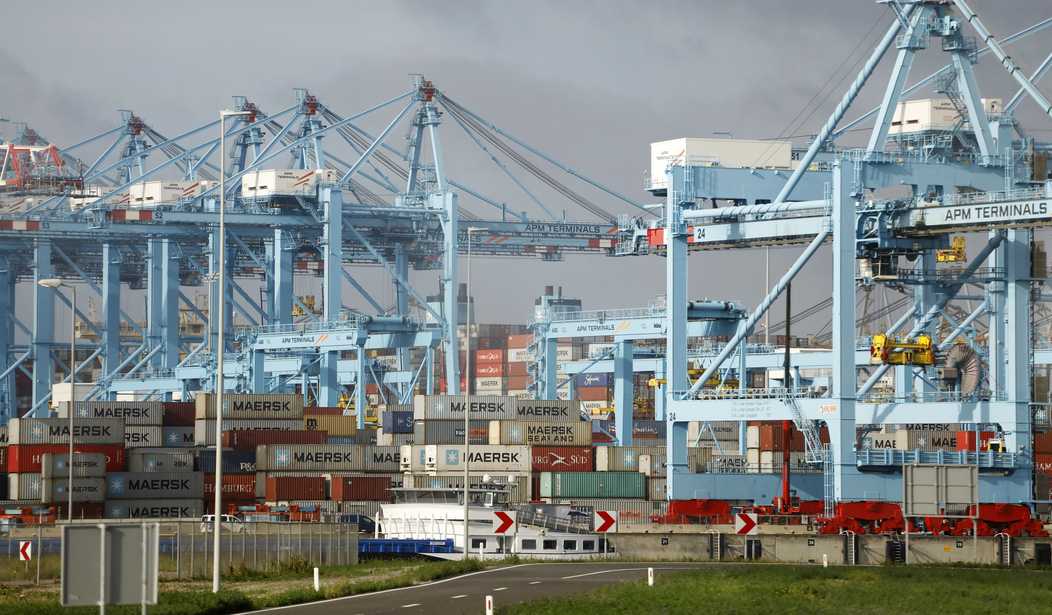The U.S. economy has been coming out of its self-imposed recession since Joe Biden took office. All those shutdowns, all those laid-off workers, and all the trillions and trillions of dollars in stimulus money should have built up enough demand that once unleashed should have caused an eruption of consumption and investment that would shatter economic growth records.
Well, the shutdowns are history, workers are back on the job — if their job still exists — and the stimulus money has been spent. Growth has been moderate with some worrying signs mixed in. Then we were told that once people were vaccinated, the economy would take off. Vaccination rates in most states exceed 60% with some states over 70%.
So why was economic growth at a measly 2% in the third quarter after growing a whopping 6.7% in the second quarter? The answer lies in consumer spending numbers.
The Commerce Department’s third-quarter GDP estimate released Thursday said consumer spending rose at an annual rate of 1.6% in the third quarter, a sharp slowdown from a 12% increase in the prior quarter. That reflected weakness in spending on long-lasting goods whose availability was limited by supply issues.
Supply-chain disruptions such as backups at U.S. ports and overseas manufacturing disruptions contributed to a sharp increase in inflation and pose a risk to the economic outlook. Despite supply-side challenges, many analysts expect the economy to regain momentum in the final months of the year as long as Covid-19 cases continue to fall.
The mantra going forward will be “supply chain disruptions” as the major cause of the slowing economy. No doubt, manufactured goods from overseas are having a hard time getting unloaded and shipped to their endpoint destination.
But that doesn’t explain the domestic bottlenecks. And that’s not a supply chain problem. It’s a labor problem.
The labor force decreased in September, and some economists say labor-force participation, or the share of Americans working or seeking a job, will never return to pre-pandemic levels. With fewer employees in the workforce, businesses are increasingly relying on automation and increased worker productivity to meet demand.
One Massachusetts cabinet company is absolutely swamped with orders but can’t fill them because of a lack of qualified workers. Two workers quit because of the vaccine mandate, and the owner can’t fill the two to four open carpenter positions. Orders that usually take five to six weeks are taking 18 weeks or longer.
President of the company Greg Antonioli told the WSJ, “I’m really somewhat paralyzed by the amount of work coming in. I should be thrilled that the phone’s ringing off the hook, and I’m almost at the point of like, ‘Oh, my God, what are we going to do?’”
There’s another worker “paralyzed by the amount of work coming in.” But he’s the guy in charge of this runaway freight train — the president of the United States. Six trillion dollars in stimulus funds have only created the conditions for another economic downturn.
Two series – from The Conference Board on business conditions, employment and income six months hence, and from the University of Michigan on the financial situation in a year and business conditions a year and five years hence – tell the same story: sentiment peaked in spring or early summer. And it has been falling precipitously since (Blanchflower and Bryson 2021a). This is true for the US as a whole and for the eight largest states for which The Conference Board collect data.
Why does this matter? Well, the rate of decline in these sentiment indices is of the same magnitude we saw back in 2007, before the Great Recession (Blanchflower and Bryson 2021b,c). We call it the 10-point rule. When the indices drop by at least 10 points, this is an early warning signal for a recession.
We test this proposition for the US over the period 1978 to September 2021 and show that consumer expectations about future economic trends are highly predictive of economic downturns 6-18 months ahead, thus providing an early-warning system for the economy (Blanchflower and Bryson 2021a).
Six to eighteen months ahead would put us smack dab in the middle of the 2022 midterms. Should we really wonder what would happen to Democrats if, in addition to double-digit inflation, the economy shows double-digit unemployment?
Joe Biden may already have led the Democratic Party to rack and ruin. Pray he hasn’t led the rest of us over the cliff too.










Join the conversation as a VIP Member